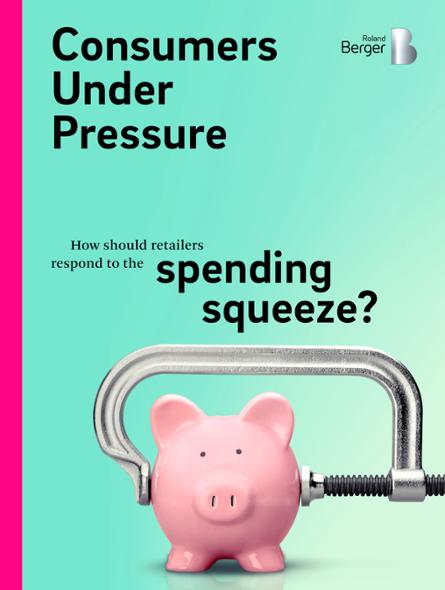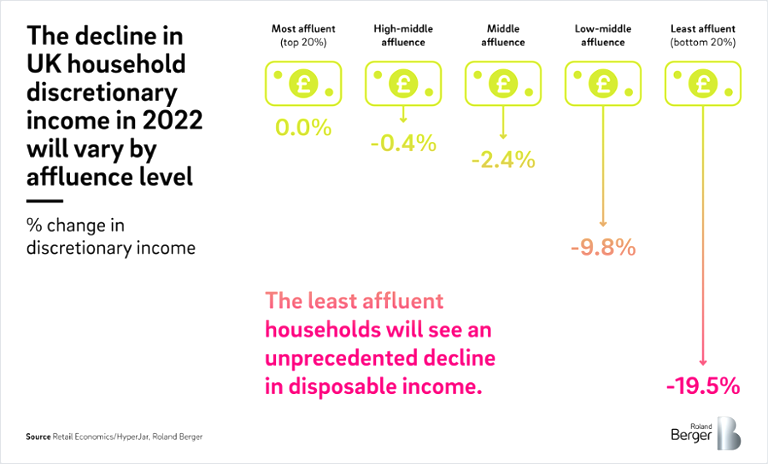Roland Berger’s research shows that when it comes to consumer behavior patterns, there is no going back to pre-Covid times.


Consumers under pressure
How should retailers respond to the spending squeeze?
Retailers are facing one of the toughest inflationary environments that the industry has seen in decades. With rapidly rising costs all along the supply chain, in their stores and employee base, retailers are also being challenged by customers whose spending power is tremendously squeezed. Now more than ever, retailers need to think about how to adapt their value proposition to meet customers' needs while protecting profitability.

"Apart from pricing, retailers will compete on value, meaning that they will need to review their promotions, adjust their assortments, and introduce technology wherever possible to ensure efficient operations. "
This is easier said than done and entails a deep understanding of how consumer behaviour is changing. In this article, we look at what we can learn from how consumers are behaving right now - as well as how they reacted during the 2008 recession - to derive key learnings. We then look at the levers that retailers can play with to optimise the price and value proposition whilst maintaining customer relationships, sales and margins.
Inflation is here to stay
As we recover from the pandemic and deflationary environment, another wave of distruption is now breaking over British retailers; rising input prices and the cost of living crisis.
According to the ONS, CPI inflation reached its highest level since 1991 when it hit 9% in June 2022. This is adding pressure to the availability and cost of labour, especially following Brexit. Whilst the Bank of England is putting plans in place to keep inflation rates under control, the magnifying effects of the war have make it likely that inflation will be more persistent than predicted, given that Russia is the third-largest oil producer in the world and Ukraine supplies approximately 17% of global maize exports.
The consumer behaviour changes we have seen
The latest census data from the ONS showed that nine in ten people had reported increases in their cost of living in 2022 versus 2021. Many consumers are feeling under pressure as they must stretch their budgets to cover essentials in this inflationary environment. As a results, we are seeing increasingly cautious shopping behaviours amongst British consumers, from trading down and searching for deals, to shopping around, and avoiding discretionary purchases.
What can we learn from previous economic turbulences?
Going back in time to the great recession of 2008-2009, we saw four key shifts in consumer behaviour which drove seismic shifts in the retail industry. While the backdrop in 2022 is different in many respects, it is helpful to understand what we can learn from the previous recession to help devise the best strategies to deal with the current crisis.

![Prices of natural gas [various units, indexed, Jul 2017 = 1]](https://img.rolandberger.com/content_assets/content_images/captions/Roland_Berger_INS_870_Consumers_Under_Pressure_GT_image_caption_none.jpg)





